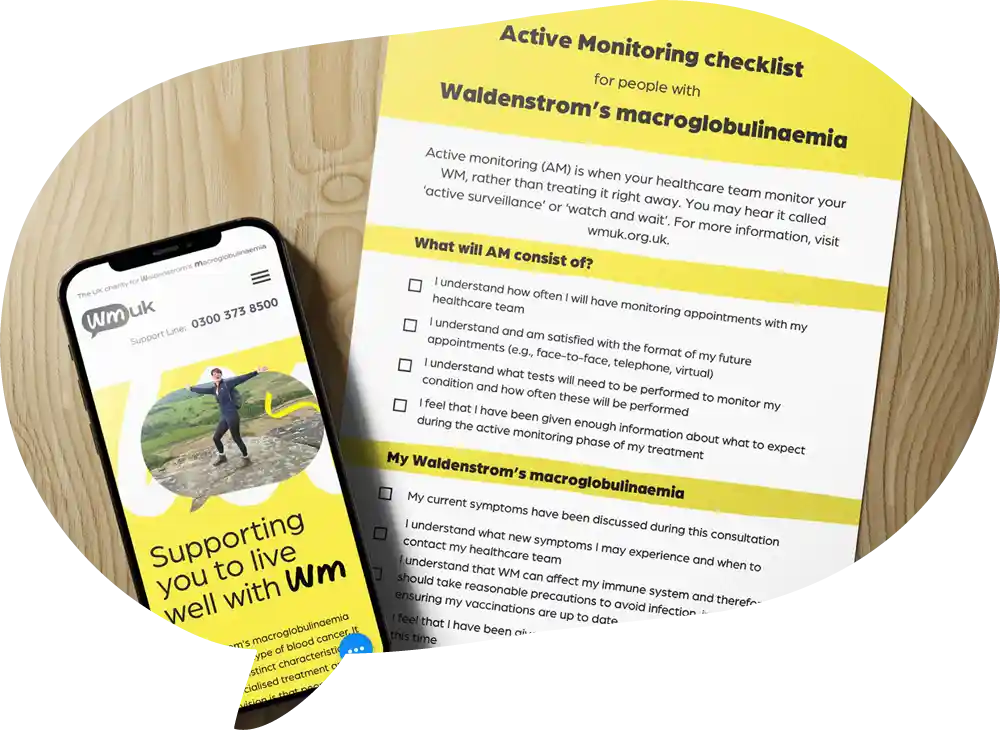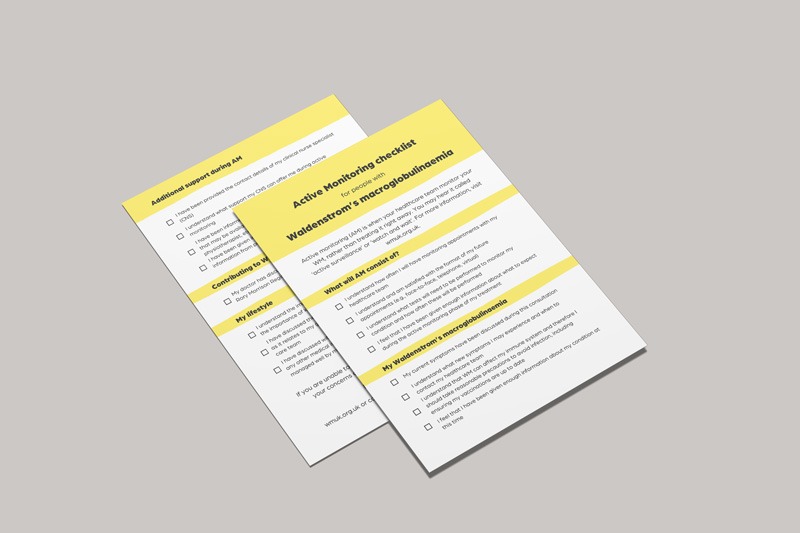Active monitoring (also called watchful waiting or observation) is when you don’t start treatment right away, but your healthcare team keeps a close eye on your condition with regular check-ups, blood tests, and scans.
This approach is often used in slow-growing conditions like Waldenstrom’s macroglobulinaemia (WM). The goal is to avoid unnecessary treatment and side effects until it’s really needed. If your WM starts to change or symptoms appear, your doctor will discuss starting treatment at that point.




Download our active monitoring checklist to help guide your conversations with your healthcare team. This has been designed with the help of patients and clinicians to put you in control of your care.
Why is treatment delayed?
When you’re first diagnosed with WM, it may be a surprise to hear you don’t need treatment right away. But for slow-growing conditions like WM, active monitoring is a safe and recommended approach.
Starting treatment early doesn’t offer extra benefits and can bring unwelcome side effects. By monitoring you closely, your doctor can hold off on treatment until it’s truly needed — making it more effective when the time comes.
If your WM starts to change or symptoms appear, your doctor will talk you through your options. Many people stay on active monitoring for years and enjoy full, active lives without the downsides of early treatment.
Is active monitoring safe?
Yes. It is the recommended way to care for people with WM that isn’t growing and who either don’t have symptoms or whose symptoms are mild.
What to Expect on Active Monitoring
While you’re on active monitoring, you’ll have regular check-ups with your healthcare team. These usually include blood tests and opportunities to discuss any symptoms you have. Your doctor will use these to track how your WM is doing and decide you need any treatment They’ll also watch out for other related conditions, and treat those if necessary.
Check-ups might happen at the hospital or over the phone/video — either way, your care stays the same. At first, you might have check-ups more frequent, for example every three months. If your WM stays stable, these may become less frequent — some people only need one a year after a while.
It’s important to mention any new or changing symptoms — even small ones — as your team might want to investigate things further.
Many people on active monitoring report feeling anxious. Here some advice from our team to help you cope.
You don’t need to wait for an appointment to speak to your healthcare team.
Designed by patients and clinicians to give you confidence discussing your care with your clinicians.

